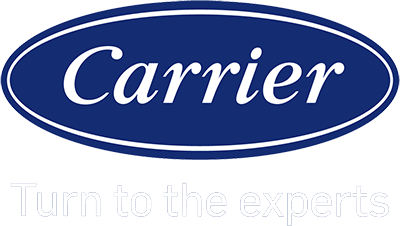Essentials of Heat Pump Sizing

Proper heat pump sizing ensures efficient operation and energy savings. It is vital to match the heat pump capacity with the needs of the building to avoid issues like inadequate heating or cooling.
Understanding Heat Pump Capacity
When we size a heat pump, its capacity is crucial. Capacity refers to the amount of heating or cooling a unit can provide, typically measured in BTUs (British Thermal Units). Larger capacity isn’t always better. An oversized system can lead to frequent cycling, reducing efficiency and comfort. Inefficient cycling can also shorten the system’s lifespan.
We need to calculate both heating and cooling loads. These loads determine the appropriate size. A heat pump that struggles to meet these demands can lead to higher energy consumption and increased costs. Accurate sizing helps us achieve the best balance between performance and efficiency.
The Role of Manual J in Load Calculation
Manual J is a standard used by HVAC professionals to perform load calculations. It considers various factors like the size of the building, insulation levels, window types, and even occupancy patterns.
These calculations allow us to determine precise heating and cooling loads. By using Manual J, we avoid common pitfalls related to guesswork. Accurate load calculations ensure our heat pumps are neither too large nor too small, optimizing comfort and energy use.
Factors Influencing Heat Pump Sizing

Effective heat pump sizing ensures efficiency and comfort. We must consider factors such as insulation levels, climate conditions, and the role of household appliances, which all impact the heat pump’s performance.
Importance of Insulation and Air Sealing
Proper insulation and air sealing are critical. Insulation helps maintain temperature by reducing heat loss in winter and keeping heat out in summer. Without it, heat pumps work much harder to maintain comfortable temperatures.
Air infiltration is another concern. Gaps and leaks allow outside air in, causing inefficient heating or cooling. This means extra energy consumption. By sealing these gaps, we can enhance energy efficiency and allow for better heat pump performance.
Impact of Local Climate Conditions
Local climate has a significant effect on heat pump sizing. In colder climates, a heat pump needs to provide more heating power. For warmer areas, cooling becomes the priority.
Each location has specific demands based on seasonal temperature variations. We need to assess historical climate data when determining the ideal pump size to ensure optimal function year-round.
Consideration of Heat-Generating Appliances
Heat-generating appliances, like ovens, dryers, or refrigerators, influence home temperature. The output of these appliances contributes to the overall heating needs, making their consideration vital in the sizing process.
If many heat-generating appliances are in use, less heating may be needed. However, they can also affect cooling demands during hotter months. We must monitor these factors to avoid over or under sizing the heat pump.
Selecting the Right Heat Pump

Choosing the appropriate heat pump size is essential for optimal performance and cost efficiency. Incorrect sizing can lead to increased energy and maintenance costs. We should focus on how proper sizing enhances performance and reduces bills.
The Consequences of Incorrect Heat Pump Sizing
Improper heat pump size affects performance. If it’s too small, it struggles to heat or cool effectively, often running constantly. This leads to higher energy bills and can cause wear, increasing maintenance costs.
On the other hand, an oversized heat pump may short cycle. This means it turns on and off quickly, which can raise energy costs and decrease the system’s lifespan. We need to ensure the pump size matches our home’s requirements to avoid these issues.
Energy Efficiency and Operational Costs
Energy efficiency is affected by heat pump sizing. A correctly sized heat pump operates efficiently, keeping energy bills lower. This is crucial since heating and cooling are significant energy expenses.
By selecting the right size, we maintain an optimal indoor climate without unnecessary power use. Energy efficiency not only lowers bills but also prolongs the HVAC system’s life by reducing strain during operation. Proper sizing is a critical step in managing overall operational costs.
Installation and Performance Optimization
Proper installation and performance optimization of heat pumps are critical to achieve maximum efficiency. To ensure this, we must consider the selection of a skilled HVAC contractor and the importance of regular maintenance.
Professional HVAC Contractor Selection
Selecting the right HVAC contractor is crucial. We must ensure the contractor is licensed and certified. An experienced contractor will properly assess our home’s BTU needs. This ensures the heat pump’s capacity matches the heating and cooling demands.
Ask for recommendations and read reviews. It’s wise to compare at least three different contractors. A trustworthy contractor will provide a detailed quote and explain their approach to the installation process. They should consider factors like blower size, system design, and ductwork layout for optimal performance.
Regular Maintenance for Sustained Efficiency
Regular maintenance is key to keeping our HVAC system running efficiently. Schedule annual or semi-annual check-ups for the heat pump. This helps identify potential issues before they escalate.
Maintenance tasks include cleaning the blower, checking refrigerant levels, and inspecting electrical connections. This routine helps in minimizing maintenance costs and preventing unexpected repairs. Regular maintenance can also lead to lower energy bills.
DIY maintenance steps, like changing filters, can be done monthly. By keeping our heat pump in top condition, we ensure sustained efficiency and a longer system lifespan.

